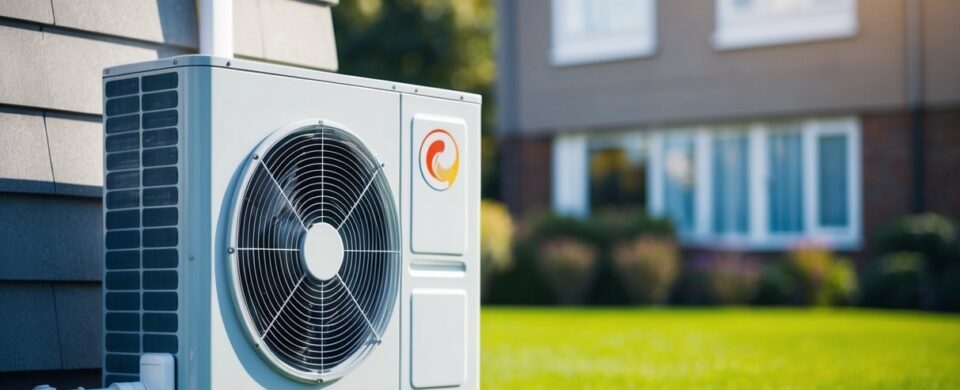How Air Source Heat Pumps Work – Understanding Their Efficiency and Benefits for Your Home
Air source heat pumps (ASHPs) are devices that extract heat from the outside air and use it to warm a home and its water. They work by transferring heat rather than creating it, making them a low-carbon and energy-efficient heating option. Even when the air is cold, these systems can still draw enough heat to keep a home comfortable.
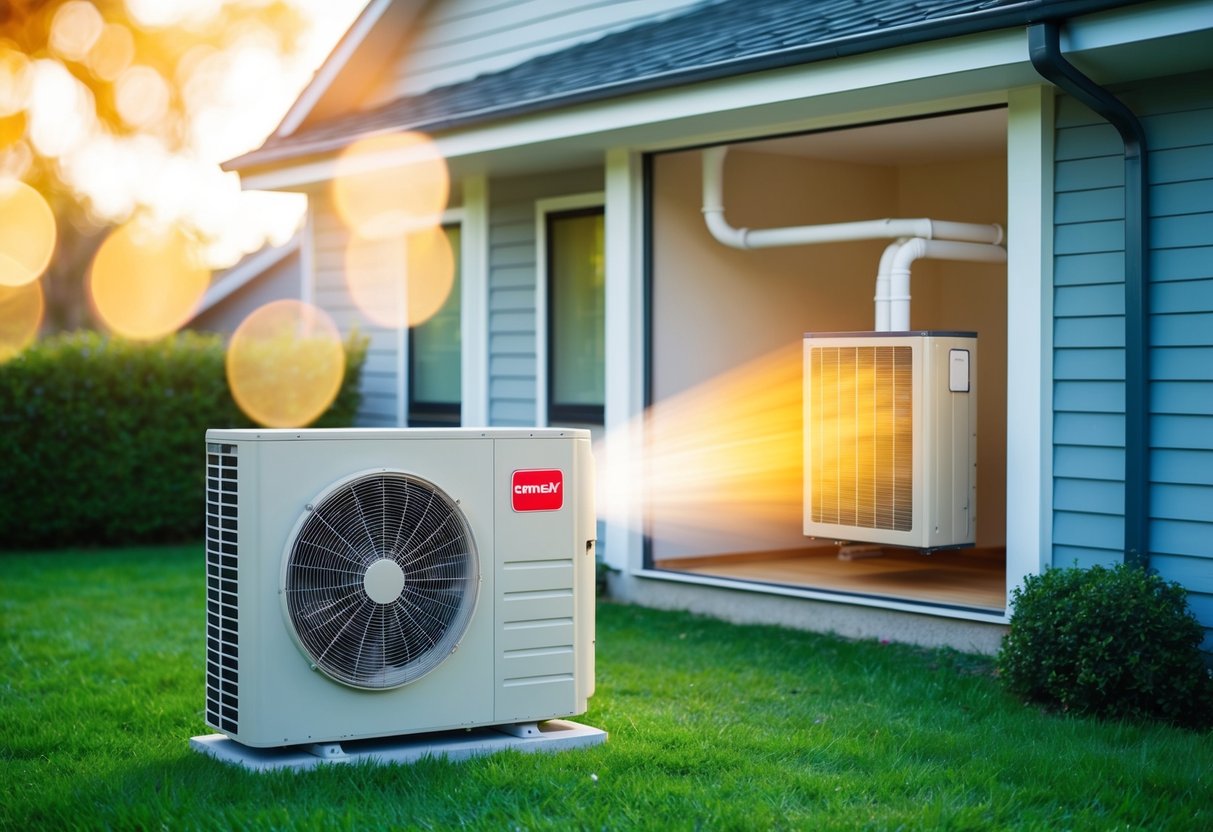
This technology offers a clear alternative to traditional boilers and electric heaters, as it reduces reliance on fossil fuels and can help lower heating bills. Understanding how air source heat pumps operate shows why many homeowners in the UK are choosing them as a smart, eco-friendly heating solution.
Understanding Air Source Heat Pumps
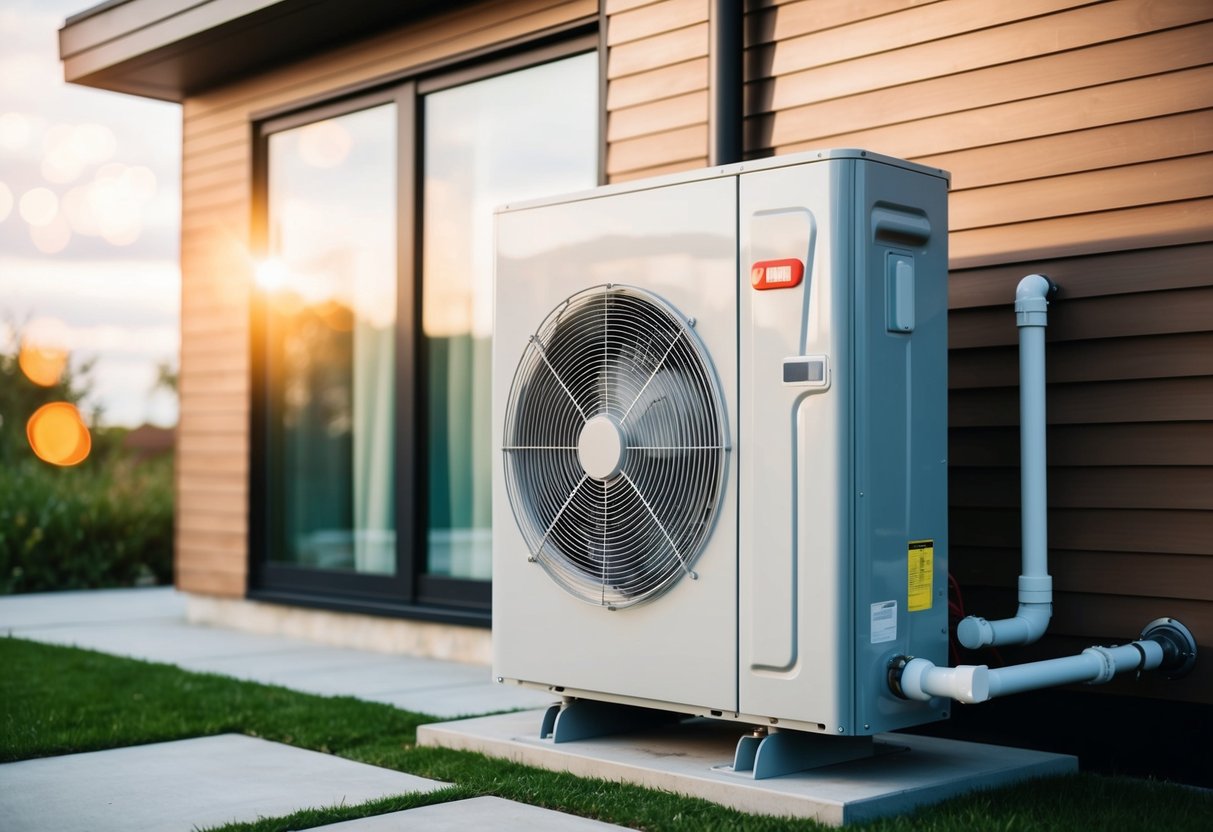
Air source heat pumps move heat from the outside air into a home, even when it is cold outside. They use different methods to do this and have specific parts that help make the system work efficiently.
What Is an Air Source Heat Pump
An air source heat pump (ASHP) takes heat from the outside air and transfers it inside for heating or hot water. It works by absorbing warmth even in cold temperatures. This makes it a useful alternative to gas or electric heating.
There are two main types: air-to-air and air-to-water heat pumps. Air-to-air systems warm the air inside the home directly. Air-to-water heat pumps heat water for central heating systems or taps. Both reduce the need for traditional heating fuels.
Types of Air Source Heat Pumps
Air-to-air heat pumps use fans to blow warm air through ducts or directly into rooms. They are best for homes without radiators or underfloor heating. These pumps provide quick warmth but do not supply hot water.
Air-to-water heat pumps heat water that flows through radiators or underfloor heating. They can also provide hot water for baths and taps. These systems work well in homes with existing water heating setups.
Each type has different installation needs and works best in different homes, depending on heating requirements and house design.
Key Components and How They Function
The main parts of an ASHP are:
- Evaporator coil: absorbs heat from outside air.
- Compressor: compresses the gas to increase its temperature.
- Condenser coil: releases heat into the home or heating system.
- Expansion valve: reduces pressure to cool the refrigerant so it can absorb more heat.
The process starts when the evaporator coil takes heat from the air. The refrigerant warms up and turns into gas. The compressor raises the gas temperature further. This heat then moves to the condenser coil, which warms the water or air inside. Finally, the refrigerant cools and repeats the cycle.
This system runs on electricity but is more efficient than direct electric heating because it moves existing heat rather than creating it.
How Air Source Heat Pumps Work
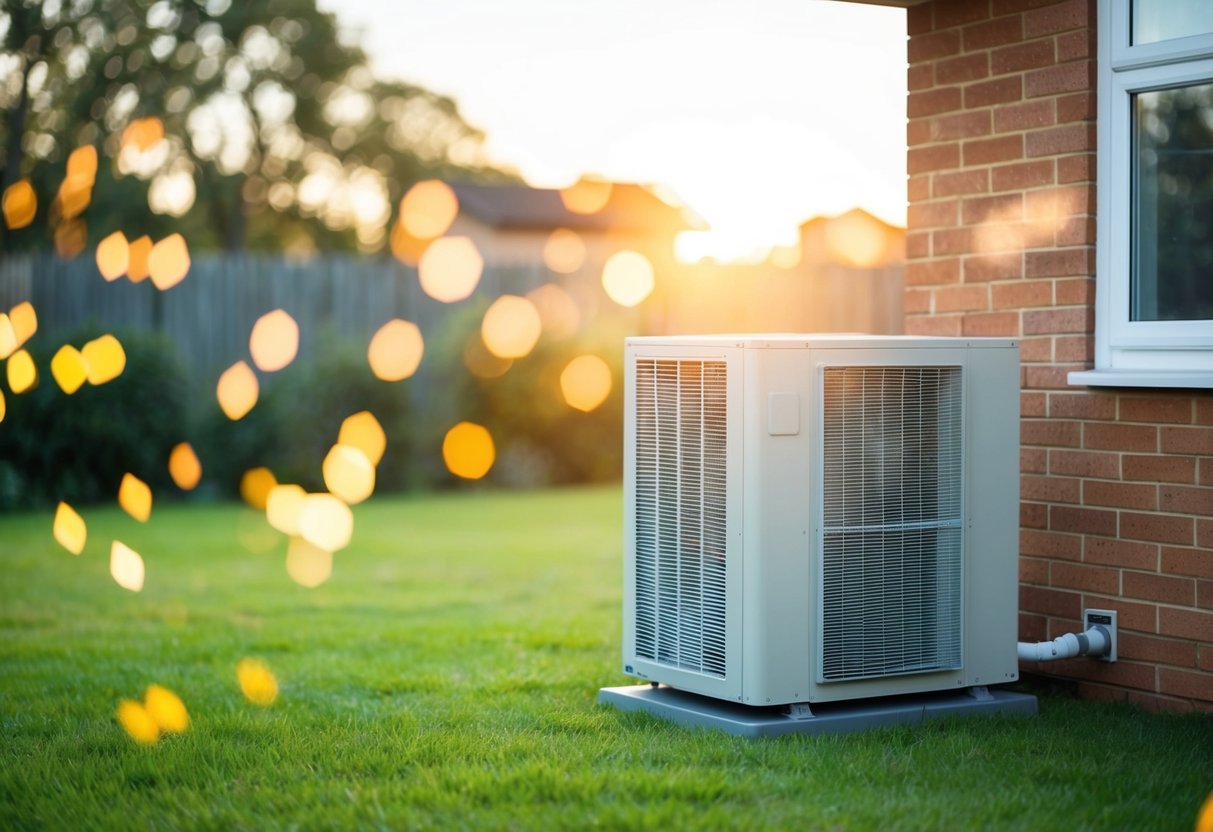
Air source heat pumps use the air outside to heat or cool a home. They move heat instead of making it by burning fuel. This process helps lower energy use and can work in varying weather conditions.
The Science Behind Heat Pumps
Air source heat pumps absorb heat from the outside air using a special fluid called refrigerant. This fluid warms up as it collects heat, even in cold weather. Then, a compressor squeezes the refrigerant, raising its temperature further.
This hot refrigerant heats water or air inside the house, providing warmth. The process moves heat rather than creating it, which means it uses less electricity than electric heaters. The cycle repeats to keep the home at the needed temperature.
Heating and Cooling with an Air Source Heat Pump
These heat pumps can both heat and cool a home. In winter, they draw heat from outside and transfer it inside for heating. In summer, the process reverses: heat is taken from inside the house and released outside to cool the rooms.
They connect to existing heating systems, like radiators or under-floor heating. The pump keeps a steady temperature and can work with thermostats to adjust heating or cooling automatically.
Efficiency Explained
Air source heat pumps are energy-efficient because they move heat rather than create it. For every unit of electricity used, they can produce around three to four units of heat energy. This ratio is called the coefficient of performance (COP).
They work best in mild climates but remain effective even in colder temperatures. Their efficiency reduces energy bills and lowers carbon emissions compared to traditional boilers or electric heaters. Maintenance is also simple, supporting long-term performance.
Installation Considerations
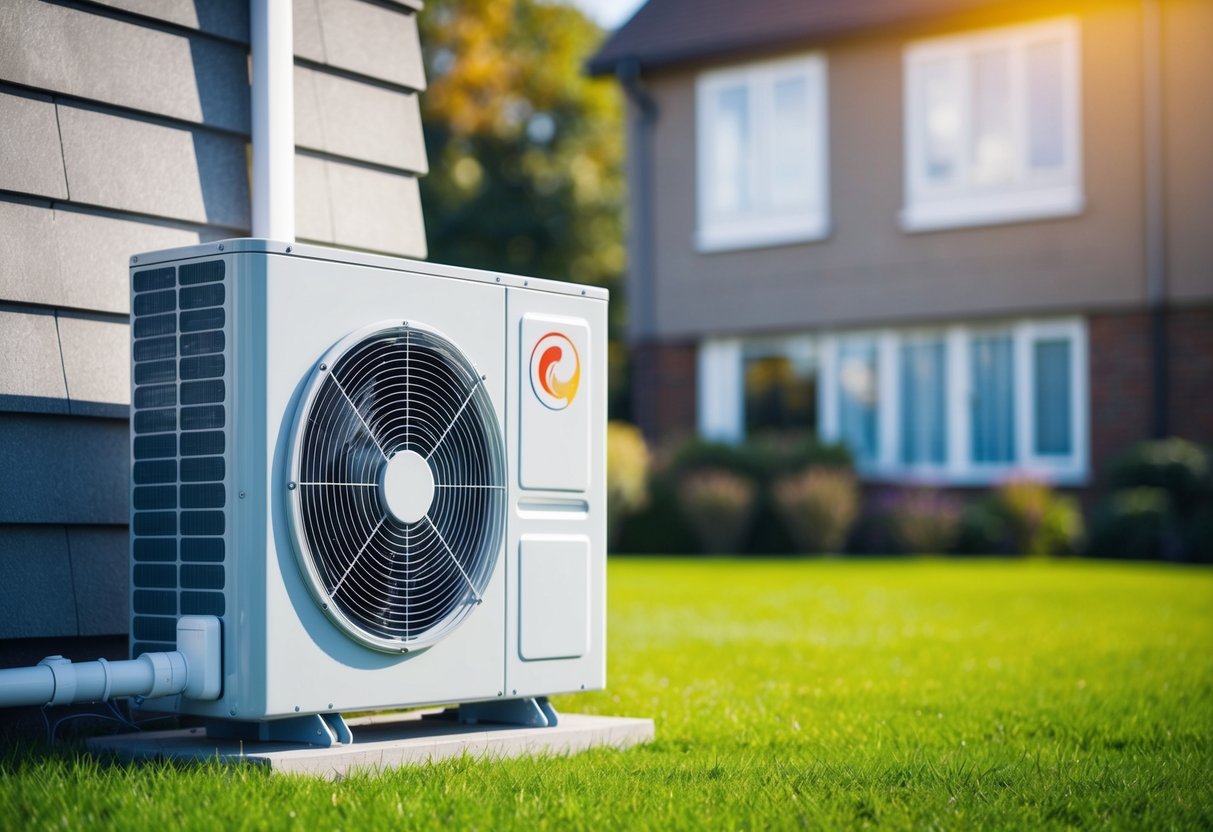
Proper planning is important to ensure the heat pump fits the home’s layout and heating needs. This includes checking available spaces and understanding how installation differs between existing homes and new builds.
Assessing Outdoor and Indoor Space
The outdoor unit needs enough clear space for air to flow freely. It should be placed where it won’t be blocked by trees, fences, or walls. Noise levels are usually low but should be considered near bedrooms or neighbours.
Indoors, space is required for the heat exchanger and controls. This area must be dry and accessible for maintenance. The layout should allow easy connection to existing heating systems, like radiators or underfloor heating.
Installation Process Overview
Air source heat pumps are generally quicker to install than ground source systems. Installation usually takes a few days, depending on house size and complexity.
Technicians fit the outdoor unit on a wall bracket or base. Pipes and cables connect outside and inside equipment. The indoor heat exchanger is installed near the boiler or heating system. After fitting, the system is tested for leaks and correct operation.
Retrofit vs. New Build Applications
In new builds, heat pumps can be planned into the design, often reducing installation costs. Spaces for the outdoor and indoor units are chosen during construction, avoiding extra work later.
For retrofit projects, installers may face challenges like limited space or older heating systems. Some modifications might be needed to radiators or pipework to ensure efficiency. Retrofit installations usually cost more due to these extra steps but can still deliver good energy savings.
Comparing Air Source Heat Pumps to Other Systems
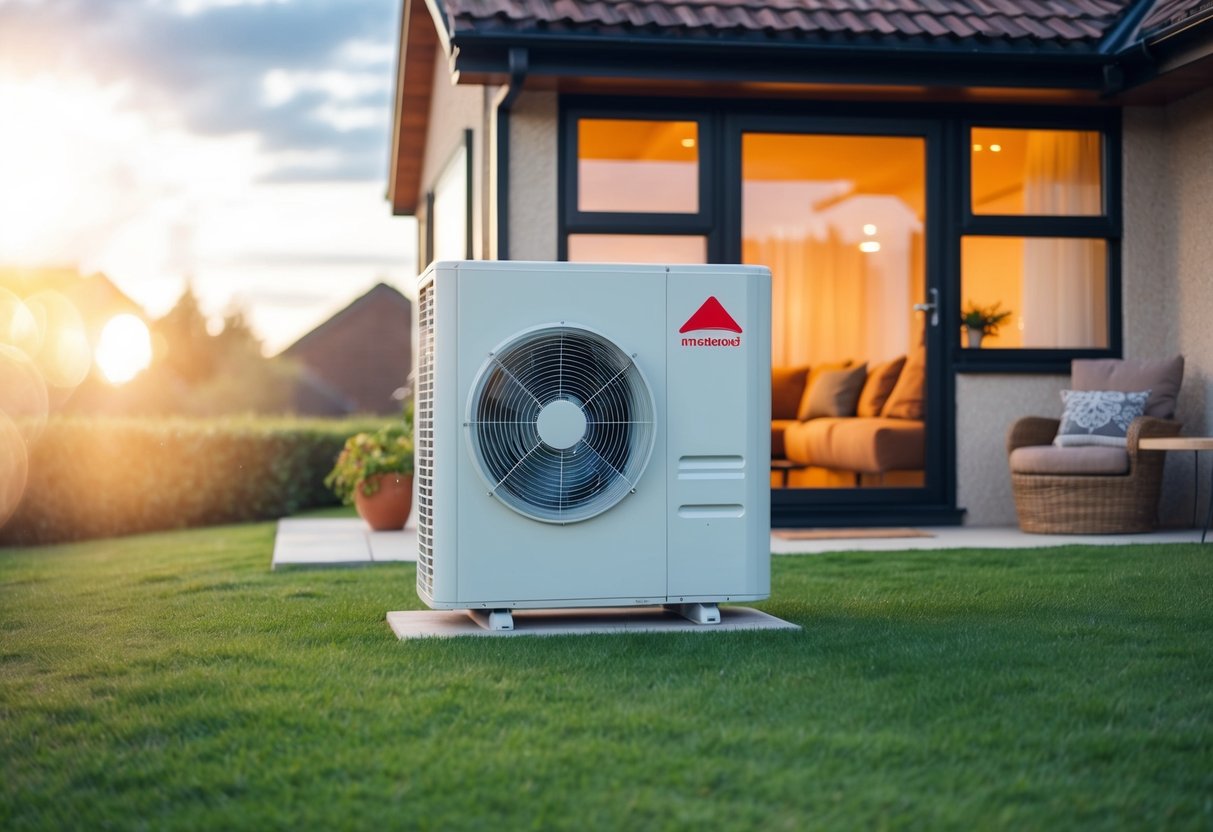
Air source heat pumps offer a different way to heat homes compared to more common systems. They work efficiently in many types of weather and can save money over time. Understanding how they stack up against gas boilers, ground source heat pumps, and hybrid options helps homeowners choose the right system.
Air Source Heat Pumps vs. Gas Boilers
Gas boilers use natural gas to heat water for radiators or hot taps. They provide quick heat and are common in many UK homes. However, they burn fossil fuels, which increases carbon emissions.
Air source heat pumps pull heat from outside air and transfer it inside. They use electricity but are around three times more energy efficient than traditional gas boilers. This efficiency leads to lower energy bills and reduced carbon footprints.
Gas boilers typically cost less upfront, but the running costs can be higher due to fuel prices. Air source heat pumps require a bigger initial investment but save money over time. They also work well with underfloor heating systems, which operate at lower temperatures than gas boilers.
| Feature | Gas Boiler | Air Source Heat Pump |
|---|---|---|
| Fuel | Natural gas | Electricity |
| Efficiency | Around 90% | Up to 300% (COP 3) |
| Emissions | High | Low |
| Running cost | Moderate to high | Lower |
| Installation cost | Lower | Higher |
Air Source vs. Ground Source Heat Pumps
Ground source heat pumps use pipes buried in the ground to collect heat. They stay more stable because the earth temperature changes less than air temperature. This stability makes them very efficient, especially in colder climates.
Air source heat pumps are easier and cheaper to install since they don’t need ground works. They work well even in temperatures as low as -15°C to -25°C, but their efficiency may drop in very cold weather.
Ground source heat pumps often offer higher efficiency but have longer payback periods due to higher installation costs and space requirements.
| Feature | Air Source Heat Pump | Ground Source Heat Pump |
|---|---|---|
| Installation cost | Lower | Higher |
| Space needed | Outside wall or roof | Large outdoor area |
| Efficiency | Good (varies with temperature) | Generally higher |
| Maintenance | Low | Low to moderate |
| Best for | Most homes | Homes with gardens |
Hybrid Heat Pump Options
Hybrid heat pumps pair an air source heat pump with a gas boiler or combi boiler. The system switches between the two heating types depending on which is most efficient at the time.
When the weather is mild, the heat pump provides heating. If temperatures drop very low, the gas boiler turns on to give fast, reliable warmth. This approach reduces fuel use while ensuring comfort.
Hybrid systems are useful where upgrading completely to a heat pump isn’t practical. They help reduce gas consumption and carbon emissions while making use of existing gas heating equipment when needed.
This setup is flexible and can be a smart choice for homes that want to slowly transition to greener heating.
Benefits of Air Source Heat Pumps
Air source heat pumps offer a range of practical advantages for homeowners. They provide effective heating while using less energy than traditional systems. These pumps also help reduce carbon emissions and can lower the overall cost of running a heating system.
Energy Savings and Efficiency
Air source heat pumps work by extracting heat from the outside air, even when it’s cold. This process uses electricity but requires less energy than burning fuel. Because of this, they can be two to three times more efficient than conventional gas boilers.
The efficiency of these pumps means less energy is needed to heat a home, which leads to smaller energy bills. They perform well in most climates and can provide heat and hot water year-round. This efficiency also helps reduce reliance on non-renewable energy sources.
Carbon Footprint Reduction
Using an air source heat pump cuts down on greenhouse gas emissions compared to traditional heating. Since heat pumps transfer heat rather than create it by burning fuel, they produce lower carbon emissions.
Switching from an old gas boiler to a heat pump can reduce a home’s CO2 emissions by roughly 13%. This makes heat pumps an eco-friendly choice for those wanting to lower their carbon footprint and support renewable energy usage.
Lower Running Costs
Air source heat pumps typically have lower running costs than fossil fuel systems. Although the initial installation cost is higher, energy savings balance this over time.
These pumps rely mainly on electricity, which tends to be more stable in price than gas or oil. Additionally, many regions offer incentives to help cover installation costs, making heat pumps more affordable for homeowners looking to reduce energy bills.
Integrating Air Source Heat Pumps with Home Systems
Air source heat pumps work best when matched with efficient heating setups and good home insulation. Proper integration with underfloor heating and existing hot water systems optimises energy use. Meeting building regulations ensures the system runs safely and effectively.
Pairing with Underfloor Heating
Air source heat pumps produce lower-temperature heat compared to traditional boilers. Underfloor heating suits this well because it works efficiently with gentle, consistent heat. This pairing helps maintain warmth evenly throughout rooms.
Underfloor heating spreads heat over a large surface, so it needs less energy to keep a home warm. This improves the heat pump’s efficiency and lowers running costs. It also provides more comfort without hot or cold spots.
When installing, the system’s controls should be synced. This means the heat pump and underfloor heating respond together, avoiding wasted energy. It is important to have a professional check the flow temperature to match the heat pump’s output.
Heating and Hot Water Solutions
Air source heat pumps can provide both heating and hot water but operate at lower temperatures than standard boilers. To store hot water effectively, a compatible hot water cylinder is often used. This allows hot water to be available on demand without overworking the pump.
Combining the heat pump with a hot water cylinder that has good insulation reduces heat loss. Some systems include electric immersion heaters as backup for peak demand times. This ensures a constant hot water supply when needed.
Installing controls that manage when and how the heat pump heats water can reduce electricity use during peak hours. This helps lower energy bills and takes pressure off the grid.
Insulation and Building Regulations
Good insulation is vital for air source heat pumps to work well. This includes loft insulation and cavity wall insulation to reduce heat loss. A well-insulated home holds heat longer and reduces the heat pump’s workload.
Building regulations may require specific standards of insulation for new installations or upgrades. Meeting these rules ensures the heat pump system is efficient and safe. Ignoring these can cause higher energy costs and may not meet legal standards.
An energy assessment before installation can identify weak spots in insulation. Fixing these helps the heat pump deliver consistent heat and reduces running costs over time.
Costs, Grants, and Financial Incentives
Air source heat pumps have upfront costs but offer access to financial help to ease the expense. They also provide savings over time through lower energy use and reduced bills.
Heat Pump Cost Overview
The average cost to install an air source heat pump ranges between £7,000 and £13,000. This price depends on the system size, property type, and installation complexity. Compared to replacing a gas boiler, it is more expensive initially.
Additional costs may include upgrading radiators or underfloor heating for better efficiency. Running costs are generally lower since heat pumps use electricity efficiently.
Homeowners should consider installation disruption, which can take a few days. It is wise to get quotes from multiple providers like British Gas or E.ON for accurate pricing.
Government Grants and Schemes
In England and Wales, the Boiler Upgrade Scheme offers grants worth £5,000 for heat pump installations. This helps reduce the initial costs significantly.
Scotland has schemes like Home Energy Scotland that provide advice and financial support for renewable heating, including grants and loans. These vary by region and property type.
Some energy suppliers also run incentive programmes, so it’s worth checking with companies such as British Gas or E.ON.
Grants usually require installation by accredited professionals to qualify.
Long-Term Savings and Payback
Air source heat pumps are three times more energy-efficient than traditional gas boilers. This efficiency translates to much lower heating bills, sometimes cutting costs by up to 50%.
They work well with solar panels, further reducing electricity expenses by using renewable energy on-site. Typical payback periods range from 7 to 15 years depending on usage and energy prices.
While initial costs are higher, owners save through lower utility bills and potential increased property value. Regular maintenance is minimal but important for long-term performance.

